2nd Party Audit
2nd Party Audit
Auditing is defined as the on-site verification activity of quality components by external sources tomeet or exceed your standards’ compliance to requirements. An audit can apply to an entire organization or might be specific to a function, process, or production step. Some audits have special management purposes, such as auditing documents, risk, or performance, or following up on completed corrective actions.
The three different types of Audit
There are three main kinds of audit:
- Process audit: This kind of audit checks that processes are working inside established limits. It considers an activity or operation to predetermine directions or standards to measure conformance to these standards and the adequacy of the directions. A process audit may:
- Check conformance to characterized necessities like time, exactness, temperature, pressure, responsiveness, component, and composition.
- Inspect the (resources, materials, and individuals) applied to change the contributions to yield output, the environment, the techniques (systems, guidelines) followed, and the actions gathered to decide process performance.
- Check the ampleness and adequacy of the process controls laid out by methodology, work guidelines, flowcharts, and training and process details.
- Product audit: This sort of audit is an assessment of a specific product or service, like equipment, processed material, or programming, to assess whether it adjusts to necessities (i.e., details, execution guidelines of the standard, and client prerequisites).
- System audit: This kind of audit is directed at the management framework. It tends to be depicted as a documented action performed to confirm, by evaluation and assessment of objectives, that applicable components are properly and successfully developed and processed, reported, and executed in understanding and related to determining prerequisites of the standard.
An audit may likewise be classified into further different types of audits that happen within an organization. Depending on the categories, and the relationships between the Auditing body and the Auditee body, these audits are usually divided into 3 types:
- 1st Party Audits
- 2nd Party Audits
- 3rd Party Audits
A first-party audit is performed inside an organization to measure its strength and weakness against its systems or techniques or potentially against external standard principles embraced by the organization. A first-party audit is an internal audit led by auditors who are working in the organization but who have no personal stake in the audit results of the area being audited.
A second-party audit is an external audit performed on a supplier by a client or by a contracted organization for a client. An agreement is set up, and the services and products are being or will be, conveyed. Second-party audits are dependent upon the guidelines of agreement law, as they are legally binding to the client and the supplier. Second-party audits will quite often be more formal than first-party audits since audit results could impact the client’s buying choices.
Why perform 2nd party audit?
Many people think that such 2nd -party audits might not be necessary once a company is certified to a particular International ISO 9001, etc standard by an accreditated certification body like Euro VERITAS Ltd (accreditated from BAR-UK, Euroveritas), but this is generally not true. Even if the supplier (interested party) is already certified after a 3rd -party audit, the organization may still want to get a 2nd party audit and/or inspection to look at special elements of the agreement/job/contract, especially when these elements might not be the same as the ISO 9001 or any other ISO standard requirements.
This might not be required by all organizations and is not a requirement to be certified to ISO 9001 or any standard by a CB, but sometimes it is mentioned in some contracts; also some customers/organizations want to be extra assured and confident and hence choose to perform such audits.Percentage of audits raising non-conformities against ISO 9001 clauses 8.2 and 8.4 during second-and third-party audits.
Benefits of 2nd Party Audit
The 2nd party audit is an important part of strengthening an organization’s supply chain through verification that all present and future suppliers meet or exceed pre-determined requirements as per the standard. Hiring an External Body like Ascent WORLD, the customer/organization can consider the following advantages:
- Does the audit by an external body introduce bias?- Using the consultancy Ascent WORLD helps you to understand the ‘0’ bias rule and helps to achieve desired unbiased output.
- Does auditing as a paid service, reduce any objectivity? – Using Ascent WORLD helps you to understand the professional use of objectivity. One of the primary objectives of a thorough supplier audit system is to protect the organization’s image from any quality issues reaching your customer. In addition, the audit can be used to assure the supplier can deliver the quantities of parts to meet demand as per the agreement.
- Is there oversight happening by certification bodies?- Most certainly Yes- which gives ample opportunities to the customer/organization to hire external bodies like Ascent WORLD to conduct such 2nd party audits.
- Would the organization benefit from already existing ISO 9001 standard requirements and from a clause on external audit in addition to internal audit?- Absolutely Yes. A well-planned 2nd party or supplier audit system helps assure that the quality of the product is received and the product reaches on time and every time. Not long ago it was revealed that even “benchmark” companies can also experience a supplier quality issue sometimes to avoid this, Contact Ascent WORLD to know more.
- Should the 2nd Party audits be explicit and in line with management inputs and requirements? – Contact Ascent WORLD to know more.
- Is there any tendency of the organization to associate such 2nd party audit results with supplier evaluations? – Contact Ascent WORLD to know more.
Request Form
If you have any questions, just fill in the
contact form, and we will answer you shortly.





